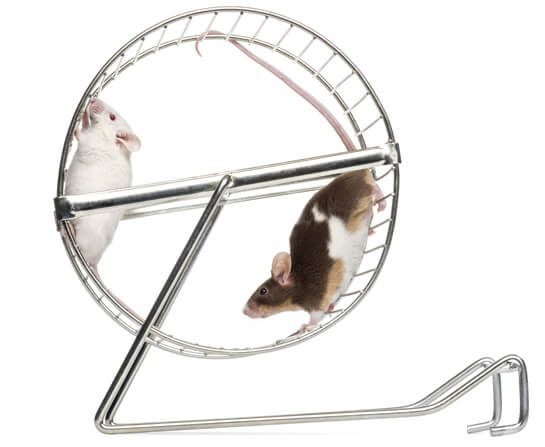From mukbang videos to endless recipe feeds, our digital environment is quietly reshaping how we eat, often without us noticing. Constant exposure to food content can trigger cravings, distracted eating, and unhealthy patterns, influencing appetite and metabolism. This article explores the science behind screen-driven overeating and practical strategies to take back control of our relationship with food.
WORDS DR MALATHI KARUPIAH
 FEATURED EXPERT FEATURED EXPERTDR MALATHI KARUPIAH Consultant Endocrinologist Prince Court Medical Centre |
From the over-the-top feasts of Mukbang videos to the never-ending stream of algorithm-driven recipes and restaurant reviews, our digital environments are quietly and powerfully reshaping the way we eat.
- A recent study among Korean adults revealed that regular exposure to food-related media can influence behaviours such as late-night eating and increased takeaway consumption.
- Constant exposure to visually enticing food content, personalized recommendations, and endless scrolls of culinary posts can act as digital habit triggers, nudging us toward snacking, late-night meals, or indulgent takeaways without conscious awareness.
- Over time, these repeated cues can inadvertently encourage overeating, reinforce unhealthy eating patterns, and even influence metabolic responses, subtly rewiring how our bodies respond to food.
HOW OUR DIGITAL ENVIRONMENT IS CHANGING OUR RELATIONSHIP WITH FOOD
The digital environment is not just shaping what we eat, but also how our bodies process and crave it, a modern pathway to chronic overeating.
Screen Exposure Increases Food Intake
- Distracted eating is a key factor.
- When our attention is diverted by content on a screen, we become less aware of how much we are consuming and less attuned to our body’s natural satiety signals.
- A systematic review and meta-analysis of experimental studies found that adults tend to eat more when exposed to a screen compared to a no-screen environment.
Visual Food Cues Alter Appetite and Metabolic Responses
- Social media platforms are saturated with highly palatable, high-calorie food imagery including massive portions featured in content like mukbang.
- Research using functional magnetic resonance imaging (fMRI) shows that high-calorie food images activate brain regions like the amygdala, orbitofrontal cortex, insula, and cerebellum.
- These regions are involved in emotional response, reward evaluation, taste memory, and cravings.
Long-Term Exposure and Its Effects
Longer-term exposure to frequent overeating driven by digital food cues, distracted consumption, and the adoption of unhealthier dietary patterns promoted online can contribute to:
- Chronic weight gain
- Obesity
- Development or worsening of metabolic complications
HOW TO PROTECT OURSELVES AND OUR LOVED ONES
We do not have to completely eliminate digital technology, but instead, cultivate a mindful, intentional relationship with both our screens and our food.
Evidence shows that small, deliberate interventions can reduce the risk of distracted eating and promote healthier dietary habits.
Practice Mindful Screen Use
- Research indicates that separating meals from screens can significantly reduce caloric intake and improve awareness of satiety cues.
- This separation can be achieved by as simply as turning off TVs or putting smartphones aside during mealtimes.
Intentional Meal Planning
Plan meals in advance to reduce the reliance on impulsive food delivery or take-out orders.
Curate Healthier Social Media Feeds
- The content we consume shapes our perceptions and behaviors.
- Follow creators who promote balanced lifestyles, intuitive eating, and evidence-based nutrition.
Reclaim Human Connections
- Eating has traditionally been a shared ritual, yet today even family dinners are often interrupted by notifications.
- Recreate screen-free mealtimes to strengthen bonds and foster more mindful food consumption.
Practice Conscious Digital Consumption
- A “digital diet” isn’t about quitting technology; it’s about using it intentionally.
- Digital tools can be leveraged to follow certified and trusted healthcare professionals, focusing on obesity management, weight loss, and credible nutrition guidance.
GOING BEYOND LIFETIME STRATEGIES
Lifestyle strategies alone may not be sufficient for everyone.
When an individual has a higher BMI or has existing metabolic complications, a purely behavioural approach may not be enough to achieve sustainable health improvements.
In these cases, effective and sustainable weight management often requires a combination approach that integrates:
- Nutrition therapy. Personalized dietary interventions improve weight loss outcomes and metabolic markers.
- Physical activity. Regular exercise not only aids weight management but also improves insulin sensitivity, cardiovascular health, and overall metabolic function.
- Behavioural therapy. Goal setting, self-monitoring, and stress management help individuals overcome habitual overeating, emotional eating, and environmental triggers, enhancing adherence to nutrition and exercise plans.
- Medical intervention.
- In appropriate cases, obesity medication management or other pharmacological therapies can complement lifestyle changes.
- Evidence shows that combining behavioural interventions with medications can lead to greater and more sustainable weight loss compared to either strategy alone.
- Consult a healthcare provider to guide your obesity management and identify the most appropriate treatment options.
CONCLUSION
Gaining conscious control over screen exposure, paired with structured lifestyle strategies and, when necessary, medical support, is a crucial step in protecting appetite regulation, preventing excessive caloric intake, and reducing the risk of obesity.
By acknowledging the interplay between digital environments and physiology, interventions can be designed to address not just eating behaviors, but the broader metabolic consequences that contribute to weight gain. Speaking to a doctor can help determine strategies that are safe and effective.
Such a holistic approach ensures that strategies are realistic, sustainable, and effective in combating obesity in today’s digitally driven world.
| This article is part of our series on foods and how consuming these foods can affect various aspects of our health. |
References:
-
Yun, A., Jung, H., Kim, B., & Choi, Y. (2025). Association between food-related media content and the eating behaviors of Korean adults according to household type. Frontiers in Nutrition, 12, 1677011. https://doi.org/10.3389/fnut.2025.1677011
-
Tabares-Tabares, M., Aznar, L. A. M., Aguilera-Cervantes, V. G., León-Landa, E., & López-Espinoza, A. (2022b). Screen use during food consumption: Does it cause increased food intake? A systematic review. Appetite, 171, 105928. https://doi.org/10.1016/j.appet.2022.105928
-
Garg, D., Smith, E., & Attuquayefio, T. (2025). Watching television while eating increases food intake: A systematic review and meta-analysis of experimental studies. Nutrients, 17(1), 166. https://doi.org/10.3390/nu17010166
-
Yang, Y., Wu, Q., & Morys, F. (2021). Brain responses to high-calorie visual food cues in individuals with normal-weight or obesity: An activation likelihood estimation meta-analysis. Brain Sciences, 11(12), 1587. https://doi.org/10.3390/brainsci11121587
-
Tabares-Tabares, M., Aznar, L. A. M., Aguilera-Cervantes, V. G., León-Landa, E., & López-Espinoza, A. (2022c). Screen use during food consumption: Does it cause increased food intake? A systematic review. Appetite, 171, 105928. https://doi.org/10.1016/j.appet.2022.105928
-
Robinson, E., Aveyard, P., Daley, A., Jolly, C., Lewis, A., Lycett, D., & Higgs, S. (2013). Eating attentively: A systematic review and meta-analysis of the effect of food intake memory and awareness on eating. The American Journal of Clinical Nutrition, 97(4), 728–742. https://doi.org/10.3945/ajcn.112.045245
-
Yanovski, S. Z., & Yanovski, J. A. (2014). Long-term drug treatment for obesity: A systematic and clinical review. Journal of the American Medical Association, 311(1), 74–86. https://doi.org/10.1001/jama.2013.281361












